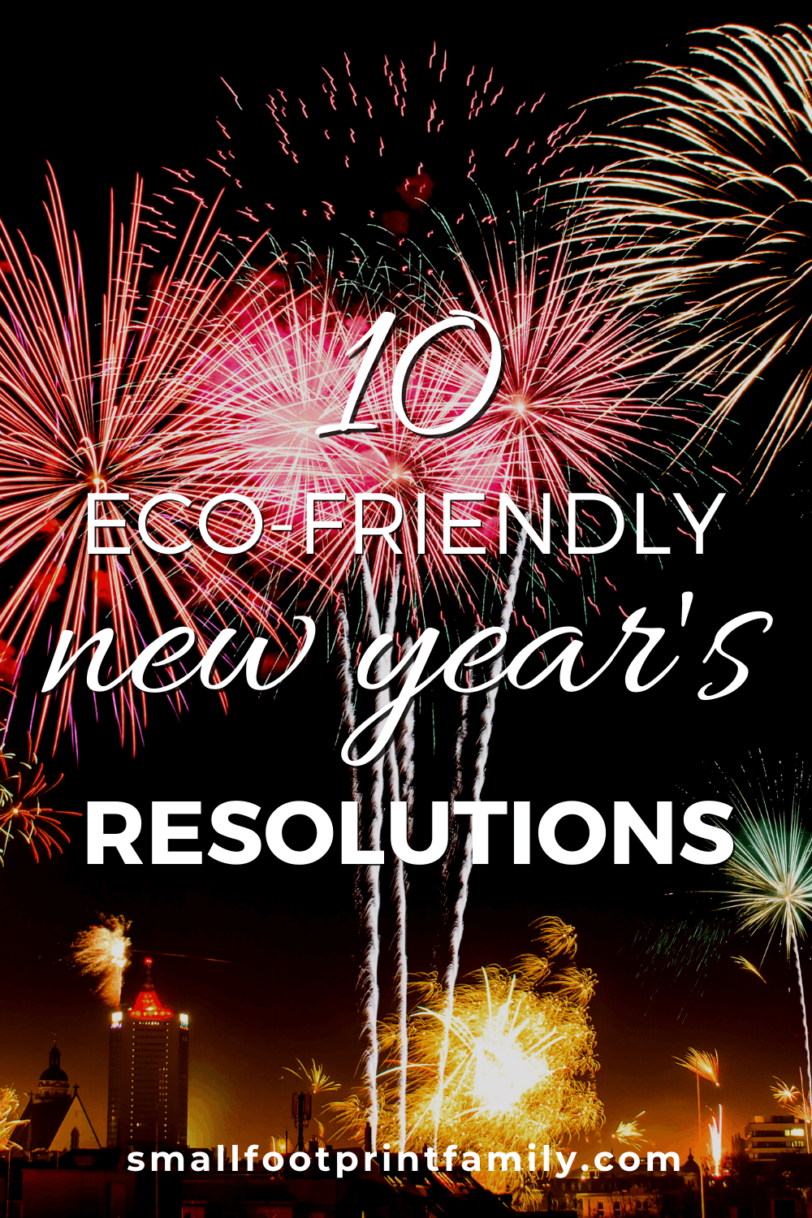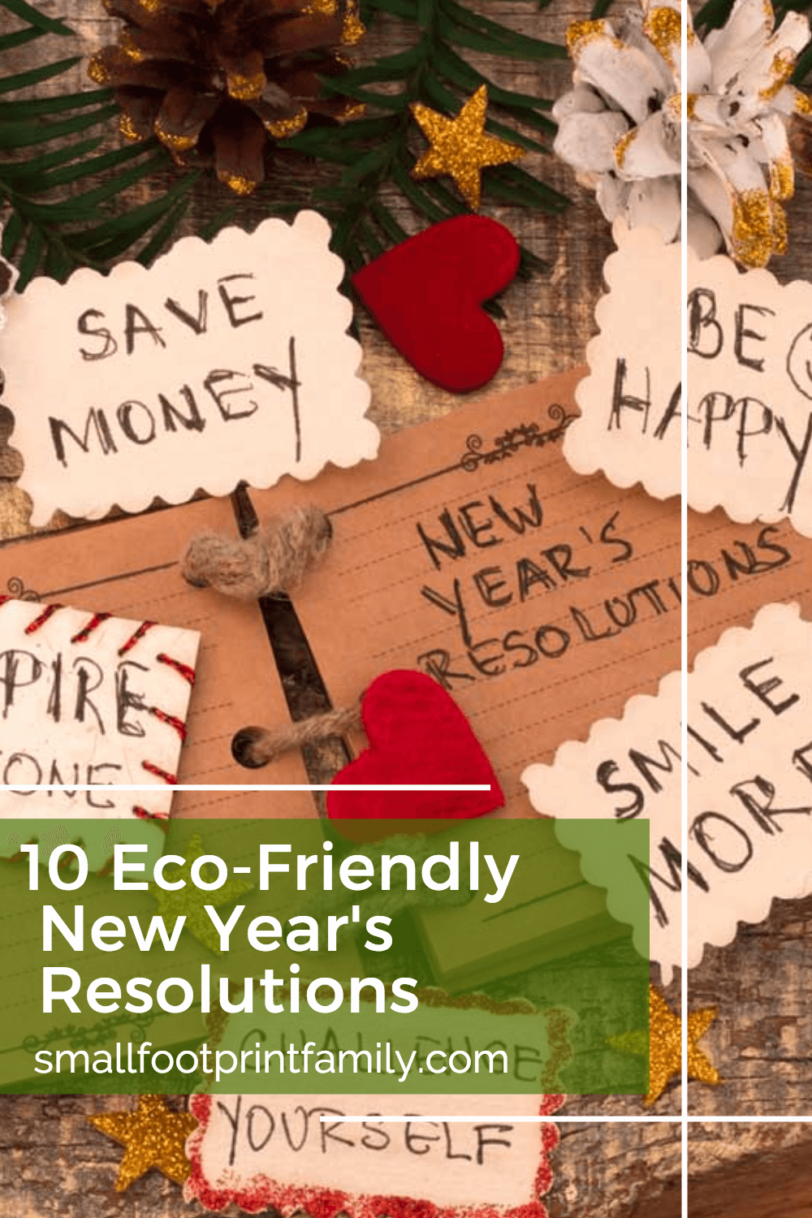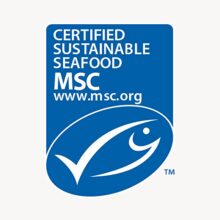10 Eco Friendly New Year’s Resolutions
It’s time to mark the new year, which is a traditional time to make some changes. And we need to make some changes pretty quickly because this planet we call Home is losing its balance.
Fires, floods, tornados, hurricanes, droughts, deep-freezes, heat bubbles… Climate instability has gotten downright scary.
The relatively stable, predictable climate we have enjoyed for generations is changing rapidly, and entire species of plants and animals are going extinct before we ever get a chance to understand them. Under our constant and growing demand, precious natural resources like fresh water, fertile soil, and forests are becoming depleted, destroyed or much harder to find.
The industrial toxins we’ve put into our air, water, food, medicine, furniture, clothing, workplaces and homes are taking a massive toll, not only on the environment, but on our public health—in the form of cancer, autoimmune disease, and more.
Every year, it seems like we need less resolution (which most of us quit after a few weeks anyway) and a lot more revolution!
But there are minor lifestyle changes we can all make, that—if even a mere 10% of the people in developed nations did them—would make a HUGE difference for our health and the well-being of the fragile ecosystems we live in and love.
Here are 10 things you can do this year to help make a household-level difference in the world, and save some money, too.
I hope that the following ideas will inspire you, and the related links will give you the tools you need to live more healthfully, naturally and sustainably in the coming year.
1. Cook From Scratch and Meal Plan
For those of us who rely on packaged, convenience foods and eating out, this can seem like a challenging resolution to adopt, but your health, your wallet, and the environment will thank you for it.
From farm to factory to store to your table, processed, packaged foods are dripping in wasted energy, oil, water and trees. In fact, worldwide, we waste about 40% of all our food! Sadly, most of it is lost between the grocery store and our kitchen trash can (or hopefully, compost bin.)
Additionally, most convenience foods are extremely high in calories, sodium, fat and sugar, and very low in vitamins and minerals. Some also contain preservatives, artificial colors, and other questionable additives. It’s no wonder that anyone consuming a Standard Western Diet for long tends to have health problems!
The solution is eating fresh, whole fruits, vegetables, starches and proteins that still have their nutrition intact—which means cooking from scratch.
Making Cooking from Scratch Easy
There are a few ways to make cooking from scratch much easier:
Having something home-made ready to go in the fridge or freezer is priceless on those nights when you are just too tired or too harried to cook. Start with batch-cooking just one or two days a week, or a session every weekend, and then work up from there.
If you’re really new to meal planning, or if you are starting a new diet like gluten-free or vegetarian, a customizable meal planning app like RealPlans can take all the headache out of planning, shopping, prepping and cooking—and prevent food waste, too!
If cooking from scratch has a steep learning curve for you (or if you just can’t be bothered), there are many meal preparation services like Daily Harvest, SunBasket or HelloFresh which deliver whole food ingredients to suit your dietary preferences, pre-chopped and with complete cooking instructions. There may also be small businesses providing meal services in your city as well.
Meal services cost a little more than shopping and preparing everything yourself, but they can give you significantly healthier options than processed or restaurant food, and help you learn to cook.
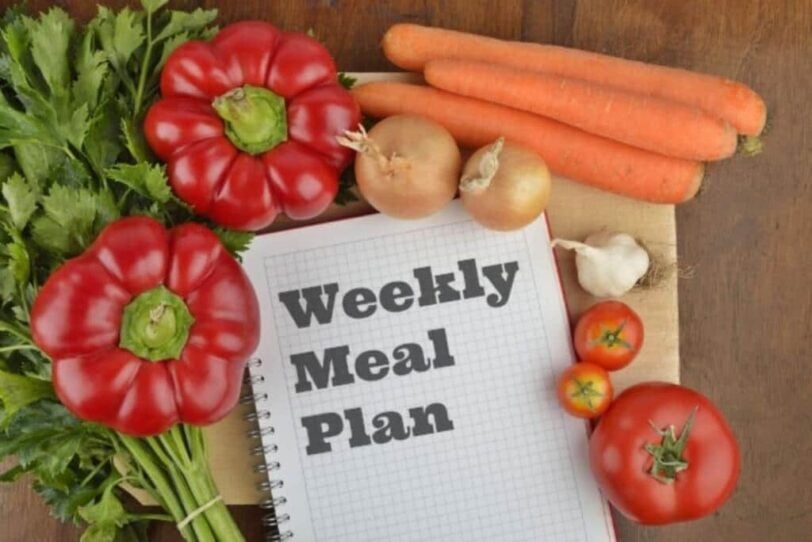
2. Eat Local and Organic as Much as Possible
There is no doubt that organic food costs a bit more up front, but this is money well spent because your food will be more nutritious and you won’t have to worry about the health effects of years of eating GMOs, toxic pesticides, or sewage sludge with your food.
Plus you can be sure that your food was grown in a way that helped protect and enhance the ecosystem it was grown in. And if your food is also locally grown, then you can be sure that it is also supporting your local farmers, local ecosystem, and local economy, too.
Making Eating Organic Easy
You can get organic food at a significantly cheaper price if you:
Of course, if you have the space and time for it, starting an organic garden is perhaps the best way to help reduce your food costs and improve your nutrition. You actually need less than an acre of land to grow all you need to eat.

3. Eat Better Meat and Less of It
Vegetarians have their environmental argument against today’s mass-produced meat right: The highly industrialized way in which we raise most livestock is inhumane, unhealthy and extremely unsustainable. Let there be no doubt: Conventional, mass-produced, grain-fed meat is a home-wrecker!
But here’s where environmental argument for vegetarianism ends: Whether you feed the grain to livestock or people doesn’t matter. An industrially farmed corn or soybean monoculture is a major source of greenhouse gases, air, water and GMO pollution either way. But a healthy grassland ecosystem is a biologically diverse, ever-cycling pump that continuously pushes carbon back into the soil.
This process rapidly builds healthy topsoil teaming with life, which produces healthier plants throughout the region, which in turn produces healthier insects and animals, who complete the cycle by pollinating, spreading seeds, and returning the nutrients and carbon back to the soil, where it is sequestered by soil life.
The irony of all of this is that the vast prairie we destroyed in the middle of the United States to mine its rich topsoil for wheat, corn and soy farms not only caused the release of most of the carbon dioxide that harms our climate today, (not to mention The Dust Bowl), but was already the perfect, natural habitat for raising healthy, happy bison, cows, chickens, turkeys, and pigs—virtually for free.
According to a Scientific American article “Future Farming: A Return to Roots?”, healthy grassland with grazers and predators on it can sequester substantially more carbon from the air than even rainforests can. Because of this, scientists and sustainable, regenerative ranchers alike believe that managed holistic grazing that mimics the grazer/predator system can be an important, best-practice for remediating desertification, air and water pollution, and even climate change.
Holistic ranching and regenerative farming also offers the benefits of healthier, happier animals, better food nutrition, greater farm biodiversity, less antibiotic use, no manure lagoons, reduced seasonal flooding and water pollution, no GMOs, better farmer livelihoods, and more. And decades of research proves this way of producing food works very sustainably.
But the only way to encourage grassland ecosystem restoration is for you and I to create demand for sustainably raised meat, dairy and eggs. So this year, resolve to eat grass-fed beef and dairy, pasture-raised poultry, eggs, and pork from smaller farms whenever possible. You could even pledge to eat only “clean meat or no meat,” like we do at our house.
Making Choosing Better Meat Easy
Animal foods that have been raised sustainably and humanely on pasture cost more, no doubt. Their prices reflect the true cost of what it takes to sustainably produce clean, safe, healthy animal products. So you might consider changing the way you eat meat by eating more like our ancestors who were dependent on grassland ecosystems for their survival.
This means eating much less meat each day, cooking more with organ meats and bones (which are more nutritious anyway), and using the fat and scraps to flavor and improve the nutrition of otherwise vegetarian dishes.
You can also make eating pasture-raised meat, dairy and eggs much more affordable by:
Farmers who sell pasture-raised meat directly to consumer by the quarter, half or whole animal will give you the very best price per pound (often equal or lower than conventional!), and will usually butcher and wrap the meat for you—but you will need a deep chest freezer to store it all.

Shopping with reusable bags everywhere you shop is a simple way to reduce ocean pollution and prevent unnecessary death to millions of turtles, dolphins, whales, sea birds, seals and sea lions, and other marine life. It also helps you reduce consumption, prevent deforestation, and reduce our dependence on fossil fuels.
Plastic bags are the second most prevalent form of litter after cigarette butts, and over 4 billion bags get caught by the wind and end up clogging storm drains and littering our forests, rivers, lakes, beaches and oceans every year.
Plastic bags are made of petroleum-based polyethylene and require 12 million barrels of oil to produce each year—a nonrenewable resource that creates more greenhouse gases and increases our dependency on imported oil. That’s over $500,000,000 that we’re spending on oil, just to literally throw it away.
Making Using Reusable Bags Easy
If you get pocket-sized bags, it’s easy to remember your reusable bags. And if you’re really into reducing your plastic usage this year, here are 25 more ideas about how to do it.
Let’s make the plastic bag industry extinct this year, not sea turtles!
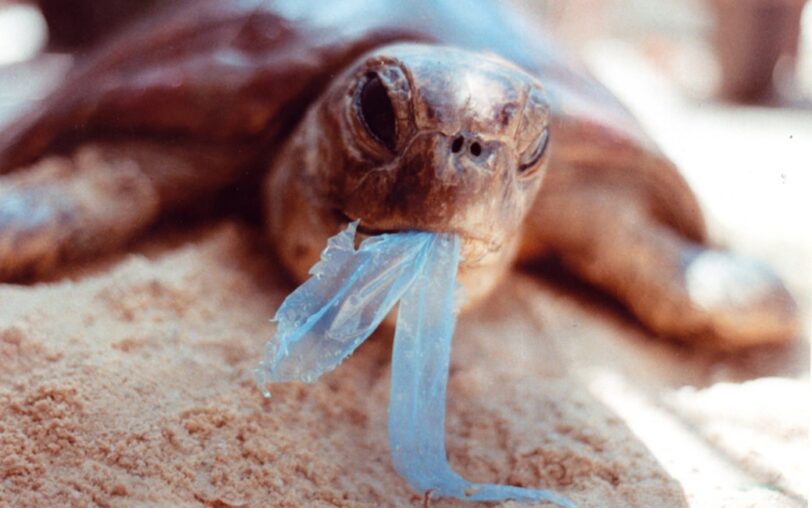
5. Avoid Fast Fashion
Big chain stores with insanely cheap clothing seem to good to be true—and that’s because they are. America’s insatiable appetite for cheap clothing that we wear for only one season couldn’t be more destructive. In fact, the fashion industry is the second-most polluting industry in the world, after the oil industry.
In order to meet our demand for the latest fashion fad, Asian and Indian farmers ravage their fertile soils and deplete precious ground water to grow millions of acres of GMO cotton for export—instead of food for their own people. The heavy chemicals needed to keep pests down and soil fertility high cause health problems at every level of the eco-system.
Cheap fashion also supports the petroleum-based, highly toxic synthetic fabric and dye industry, and uses tons of fossil fuels during farming, manufacturing and shipping. Our love affair with cheap clothes on demand also sustains inhumane, often toxic, sweatshop conditions for garment workers all over the world.
Making Sustainable Clothing Easy
This year, consider whether you need any new clothes at all, and if so, only buy what you need. When clothes shopping, try to:
- choose timeless styles that won’t go out of fashion in six months,
- choose high quality materials and manufacturing so they will last, and
- buy domestically-made garments whenever possible.
Also consider organizing clothing swaps with friends and buying at thrift stores and consignment shops. It’s amazing what you can find at a good thrift store!

6. Get Chemicals Out of Your Cosmetics
Did you know that whatever you put on your skin gets absorbed into your bloodstream? This is why your personal care products should be so pure, you could eat them!
Studies have found that more than half of the cosmetics sold in the United States and Canada contain a toxic industrial compound associated with serious health conditions, including cancer and low birth weight. They found that 56% of foundations and eye products, 48% of lip products and 47% of mascaras contained PFAS, a toxic “forever chemical” that is used in nonstick frying pans, rugs and countless other consumer products.
Just as you would read the labels on your food to make sure you aren’t eating any questionable or toxic ingredients, you should read the labels on your cosmetics and personal care products to make sure your not consuming toxins through your skin, too.
Making Safer Cosmetic Swaps Easy
Use less chemicals on your body this year by checking out your products on EWG’s Skin Deep Database. The huge database will tell you just how safe any cosmetic or sunscreen is to use. This year, choose eco-friendly and non-toxic brands of personal care products whenever possible.
Better yet, start making some of your own personal care products. Toothpaste, deodorant, and lotion are pretty easy to make at home, and there are also tons of recipes on the internet for everything from DIY mascara to homemade bath salts.

7. Stop Using Single-Use Products
Did you know that, every year, the oil used to produce plastic water bottles in the U.S. alone is enough to fuel about 1,000,000 cars? The more we squander oil on really dumb things like single-use plastic bottles, cups, cutlery, and the like, the more we have to procure it from other countries and dangerously and expensively drill out of pristine ecosystems.
Anything we can do to quickly and permanently phase out single-use, disposable plastic items would help improve our relationship with the people living in oil and gas-rich nations, protect ecosystems, save resources, reduce waste and deadly pollution, and in the process save a ton of money.
Making Single-Use Plastic Swaps Easy
If you’re still buying bottled water, take a trip to the store and check out the many great reusable water bottles on the market. Add a good water filter to your tap, and you’ll have the healthiest, cheapest water you can get.
If you regularly get coffee at a coffee shop, pick up a reusable travel mug to carry it in. Most baristas are happy to brew your double whip mocha cappuccino right into your own vessel—which will keep it warmer for longer, too.
If you really want to cut down on single-use plastic, consider also doing the following:
- Swap disposable menstrual products for washable pads, period underwear or a menstrual cup.
- Swap disposable diapers (even the “greener” ones) with the new high-tech cloth diapers.
- Bring your own containers to the take-out restaurant.
- Carry travel cutlery in the car for eating on the fly without plastic forks and spoons.
- Buy food and beverages in glass, aluminum or cardboard containers instead of plastic whenever possible, and be sure to recycle those containers. Plastic can only be downcycled and eventually landfilled (or littered), whereas glass and aluminum are 100% recyclable and valuable. Cardboard and paper are biodegradable.

8. Detox Your Home
According to the EPA, household cleaning products rank among the most toxic everyday substances to which people are exposed. Most common brands contain ingredients that have never been tested for safety, and to protect “trade secrets,” manufacturers are not even required to disclose the ingredients in their cleaning products at all!
Some especially toxic household cleaning ingredients include ammonia, chlorine bleach, aerosol propellants, detergents, petroleum distillates, drain cleaners, and toluene. Many of these substances are not only absorbed into the skin, but they also give off toxic fumes that affect everyone in the area. In fact, indoor air can be significantly more polluted than outdoor air!
Everything from dermatitis to headaches to cancer have been associated with the chemicals we use to clean our furniture, bathrooms and clothes—including air fresheners. They also remain toxic in the earth’s soil, water, and environment for generations.
Making Safer Cleaning Product Swaps Easy
In contrast to conventional cleaning products, green cleaning products are typically made with common kitchen ingredients like water, white vinegar, baking soda, and castile soap. Some also include essential oils, enzymes, and other powerful, plant-derived ingredients.
And if you are into a little DIY, making your own green cleaners, disinfectant, and laundry detergent is easy, and significantly cheaper than buying them at the store.

9. Hang Your Laundry to Dry
According to Project Laundry List, commercial, industrial and residential clothes dryers use a whopping 15-20% of domestic energy in the U.S. In the average home, the dryer is one of the most expensive appliances to run, taking up about 6% of household energy use.
Using a clothesline or indoor folding drying rack just once a week could reduce the average household carbon footprint by a whopping 2,400 pounds a year, and save hundreds of dollars in energy costs. Throw in a high efficiency, front-loading washer, a cold water wash, and your own homemade laundry detergent, and 21st century laundry couldn’t get any more eco-friendly!
Making Air Drying Your Clothes Easy
If you live in a community that has restrictions on clotheslines, consider getting a large, folding drying rack and putting it outside on the porch or patio. You can also hang your clothes to dry indoors using an indoor clothesline, folding rack, or a rack that mounts over your tub. If you put your rack near the heating duct or radiator, they will dry faster. (Here’s a great clothes-drying rack for indoor use.)
Sometimes when you air dry your clothes, they can get stiff. Adding 1/2 cup of vinegar to the rinse cycle of your washing machine will save you from needing to buy a toxic chemical fabric softener. Don’t be put off by the fragrance of the vinegar. The odor disappears as your laundry dries.
To prevent wrinkles, “snap” your clothes, which means shake them one time so hard that they make a cracking sound. Then hang the clothes carefully. You can even use a hanger on the rack or clothesline to save yourself a step.

10. Walk, Bike, or Take Public Transportation
Nothing would protect the environment and decrease our dependence on oil more than taking steps to reduce your transportation footprint. Transportation accounts for more than 30 percent of U.S. carbon dioxide emissions.
In big cities like New York, Los Angeles, Chicago, Denver, and Washington, D.C., car pollution causes the grey smog that leads to hotter summers and those horrible orange, red and even purple air-quality days that cause asthma attacks in children and other health problems in adults.
That $3 to $6 dollars a gallon you pay for gas does not even begin to cover the external costs that fossil fuel use places on our economy. Americans end up wasting 1.9 billion gallons of gasoline just sitting in traffic jams every year. This costs Americans over $100 billion dollars per year in fuel alone. Then there are pollution remediation costs, loss of productivity due to asthma and poor air quality, healthcare costs, and more.
Making Saving Gas Easy
Really, anything you can do to reduce your transportation footprint this year by walking, biking, combining trips, carpooling, taking public transportation or telecommuting—even just one day a week—will be a boon to both the environment and your wallet.
Make a game out of how often you can swap the car with a healthier or more efficient form of transportation, and reward yourself with the money you save!
And if you want to make a huge difference to your quality of life and the planet, move to a more village-like community where you can walk or bike to work, shopping, schools and most other amenities. Maybe you won’t need to own a car at all!

Many blessings to you in the New Year! May it be a healthy, abundant and prosperous one!


